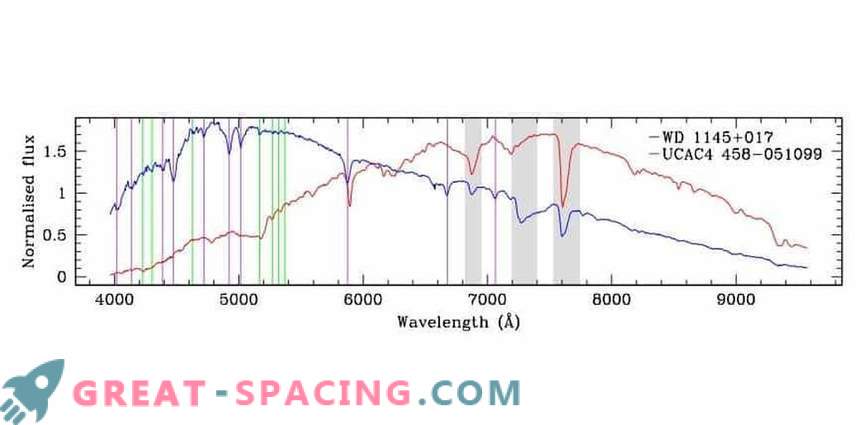
An international team of scientists investigated the unusual white dwarf WD 1145 + 017, demonstrating periodic transits of planetary debris. The new study tried to calculate the main characteristics of the object and the nature of the neighboring fragments.
WD 1145 + 017, removed at 570 light years, refers to a variety of white dwarfs. In size reaches only 2% of the Sun, and the mass - 0.63. In 2015, astronomers recorded periodic transits from debris around the star. Because of this, he became the first known white dwarf with a transit object of a planetary mass.
Further observations showed that the mysterious object, rotating around a white dwarf every 4.5 hours, is an asteroid destroyed by a star. But it took more research to calculate the exact nature. Therefore, we decided to conduct fast optical spectrophotometric and broadband photometric observations using the GTS telescope and the Liverpool telescope (LT).

Medium wide spectra of WD1145 (blue) and control star (red) obtained with GTC / OSIRIS. The absorption functions of He i and Fe II WD1145 are marked with purple and green vertical lines. The main teluric absorption is located in the light gray shaded areas. Both average spectrum normalized The analysis showed that the mysterious object may be a comet decaying under the influence of a white dwarf. The deepest transit indicates a substantial substructure near the minimum light. Astronomers explained that such a structure could be caused by a closely located chain of rocky fragments, like fragments of comet Shoemaker-Levi-9, which collapsed and fell on Jupiter. But there is also an option for a garbage cloud extending 120 degrees in azimuth with a heterogeneous density structure.
Scientists added that time-resolved spectroscopy with a higher signal-to-noise ratio would be useful for extracting details of the white dwarf and the surrounding debris. In addition, we managed to point out the parameters of the white dwarf: the effective temperature is 15020 K, and the cooling age is 224 million years.










































